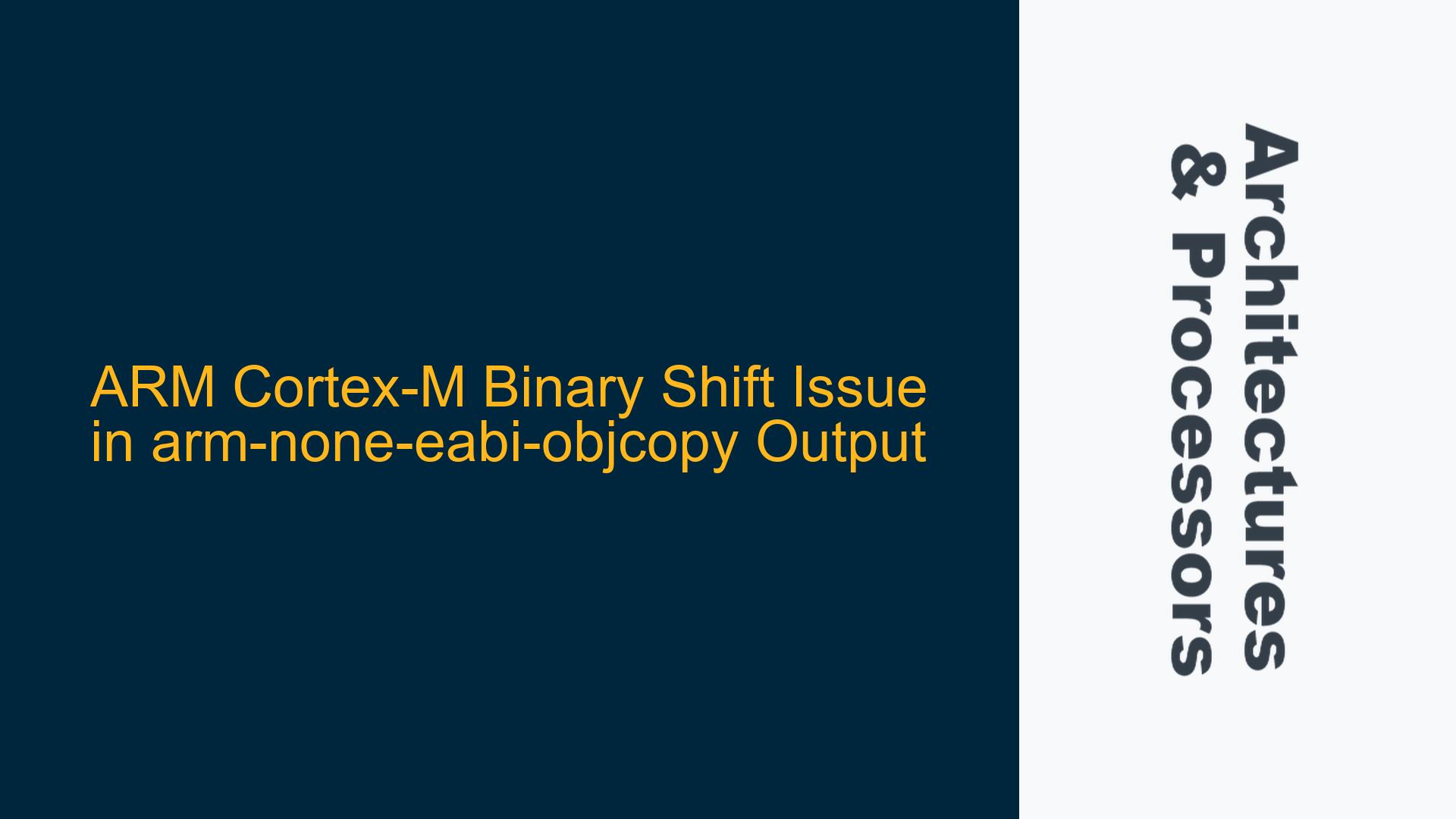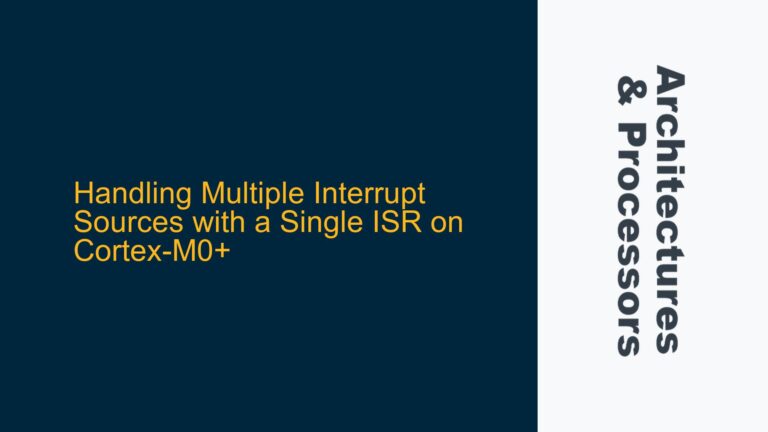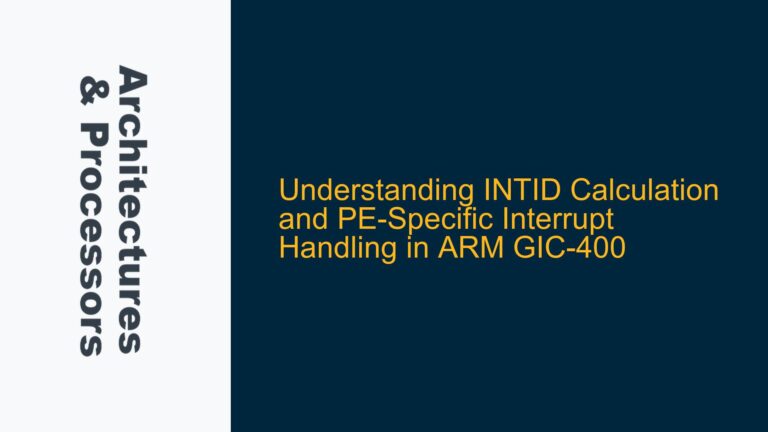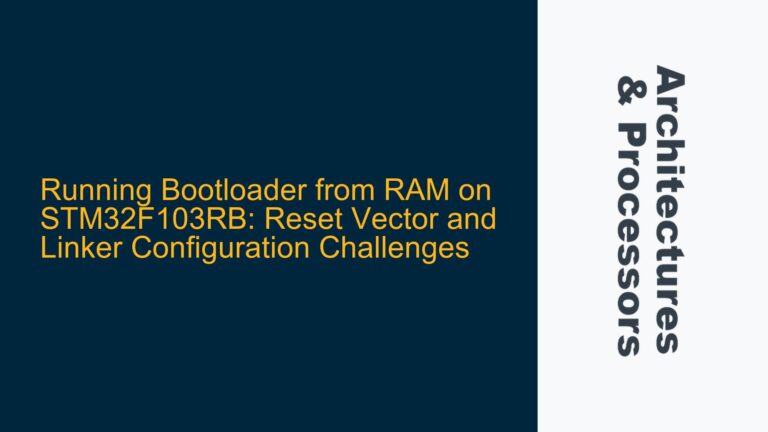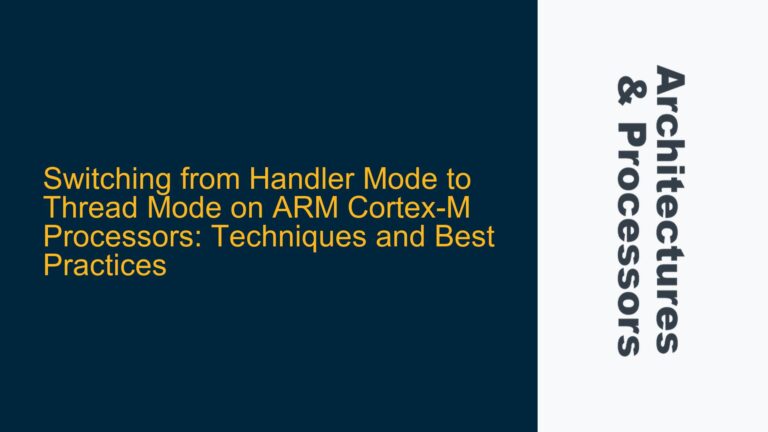ARM Cortex-M4 init_array_start Misalignment in Binary Output
The core issue revolves around a misalignment observed in the binary output generated by the arm-none-eabi-objcopy tool when converting an ARM Executable and Linkable Format (ELF) file (.axf) to a raw binary file (.bin). Specifically, the __init_array_start__ symbol, which points to the start of the initialization function table in the .axf file, is shifted by 4 bytes in the resulting .bin file. This misalignment causes the first entry in the initialization table to be incorrectly positioned at an address 4 bytes before the intended location, while the last entry is truncated or nullified. This issue is particularly problematic for ARM Cortex-M4 microcontrollers, where the __init_array_start__ table is critical for proper initialization of global C++ objects and other runtime constructs.
The misalignment manifests as a discrepancy between the memory addresses of the __init_array_start__ table in the .axf file and the .bin file. In the .axf file, the __init_array_start__ symbol correctly points to the address 0x00085a80, and the initialization table is properly populated. However, in the .bin file, the first entry of the table is shifted to 0x00085a7c, and the last entry is corrupted. This behavior suggests that the arm-none-eabi-objcopy tool is not preserving the memory layout and alignment of the .axf file during the conversion process.
The issue is exacerbated by the fact that the .bin file is a raw binary format that does not contain explicit memory address information. Instead, it relies on the assumption that the data will be loaded at a specific base address in memory. If the alignment of critical data structures, such as the __init_array_start__ table, is not preserved, the resulting binary will fail to execute correctly on the target hardware.
Memory Section Alignment and Linker Script Configuration
The root cause of the binary shift issue lies in the interaction between the memory section alignment in the linker script and the behavior of the arm-none-eabi-objcopy tool. The linker script defines how different sections of the program, such as .text, .data, and .bss, are organized in memory. It also specifies the alignment requirements for each section. If the alignment of the __init_array_start__ table is not explicitly defined or is inconsistent with the alignment used by arm-none-eabi-objcopy, the resulting binary may exhibit misalignment issues.
Another potential cause is the use of incorrect or incompatible command-line options with the arm-none-eabi-objcopy tool. The -O binary option instructs the tool to generate a raw binary file, but it does not guarantee that the alignment of sections in the input .axf file will be preserved. If the tool interprets the alignment requirements differently from the linker script, it may introduce shifts in the output binary.
Additionally, the issue may be related to the handling of padding bytes in the .axf file. The ELF format often includes padding bytes to ensure that sections are aligned to specific boundaries. If the arm-none-eabi-objcopy tool does not account for these padding bytes correctly, it may produce a binary file with misaligned data.
Verifying Linker Script Alignment and Using Custom objcopy Options
To resolve the binary shift issue, the first step is to verify and adjust the alignment settings in the linker script. Ensure that the alignment of the __init_array_start__ table and other critical sections is explicitly defined and consistent with the requirements of the target hardware. For example, if the __init_array_start__ table is located in the .data section, the linker script should include an alignment directive such as . = ALIGN(4); to ensure that the section is aligned to a 4-byte boundary.
Next, consider using custom command-line options with the arm-none-eabi-objcopy tool to preserve the alignment of sections in the output binary. One approach is to use the --gap-fill option to specify a fill pattern for any gaps between sections. This can help ensure that the alignment of sections is maintained in the output binary. For example, the following command can be used to generate a binary file with a fill pattern of 0xFF:
arm-none-eabi-objcopy -O binary --gap-fill=0xFF binary/executable.axf binary/executable.bin
Another approach is to use the --pad-to option to pad the output binary to a specific address. This can be useful if the misalignment is caused by the output binary being smaller than expected. For example, the following command pads the output binary to the address 0x00085a80:
arm-none-eabi-objcopy -O binary --pad-to=0x00085a80 binary/executable.axf binary/executable.bin
If the issue persists, it may be necessary to manually inspect the .axf and .bin files to identify any discrepancies in the alignment of sections. Tools such as readelf and xxd can be used to analyze the contents of the files and verify that the __init_array_start__ table is correctly aligned in both the input and output files.
Finally, consider updating the arm-none-eabi toolchain to the latest version. The issue may be caused by a bug in the version of the toolchain being used, and updating to a newer version may resolve the problem. If the issue is confirmed to be a bug in the toolchain, consider reporting it to the maintainers of the toolchain for further investigation and resolution.
By carefully verifying the alignment settings in the linker script, using custom command-line options with the arm-none-eabi-objcopy tool, and inspecting the contents of the .axf and .bin files, the binary shift issue can be effectively resolved, ensuring that the __init_array_start__ table and other critical data structures are correctly aligned in the output binary.
